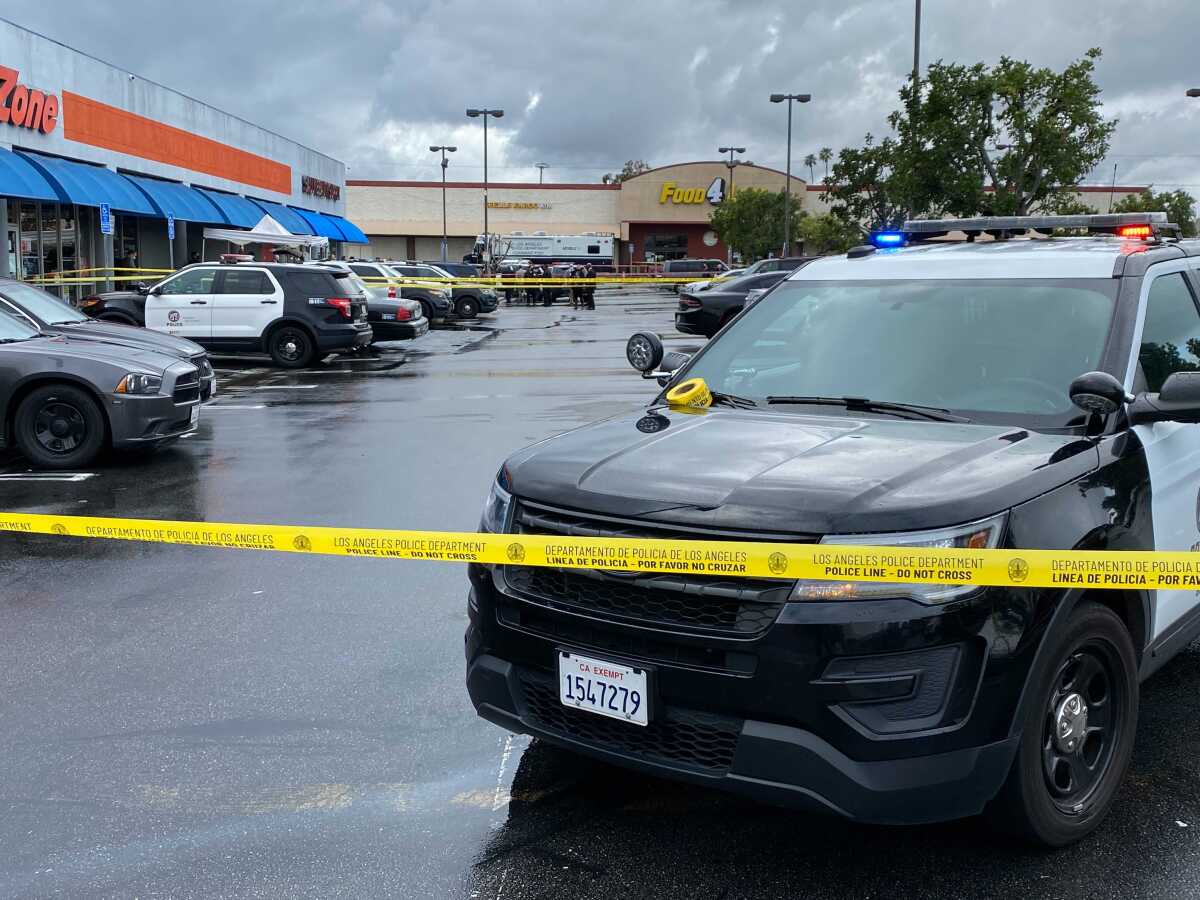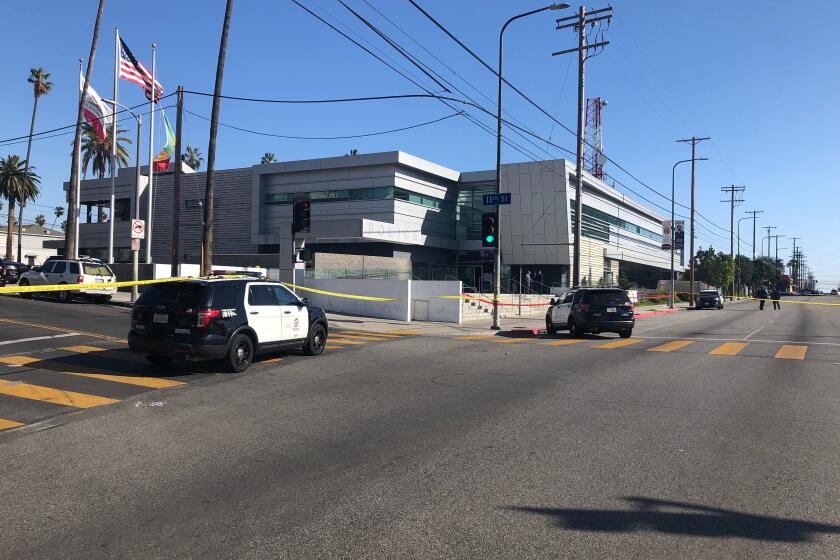LAPD shootings remained near historic low in 2020, but are up in 2021

- Share via
Shootings by Los Angeles police officers remained near a historic low and police killings continued to decline in 2020, though an uptick in both categories during the first half of this year has threatened to reverse the progress.
LAPD officers opened fire 27 times last year, killing seven people, according to the department’s annual use of force report, published Tuesday. That compared to a 30-year low of 26 shootings in 2019, in which 12 people were killed.
The seven deaths, some of which remain under investigation, continued a downward trend in fatal LAPD shootings since 2015, when LAPD officers fatally shot 21 people.
Already in 2021, however, officers have opened fire 16 times, killing six people. At this time last year, they had opened fire 10 times, killing four people.
The increase this year has been driven in part by a large cluster of shootings in March.
During a meeting of the civilian Police Commission Tuesday, officials noted the increase in shootings so far this year with concern, and said they are keeping an eye on it.
LAPD shooting outside Olympic station adds to ‘striking’ cluster of police shootings since last week
The LAPD investigating six separate police shootings since last week, including one Tuesday outside the department’s Olympic police station.
They also praised officers for the reduction in shootings in recent years, crediting changes in policy that focused on preserving life, encouraged officers to use de-escalation tactics to avoid shootings whenever possible, and led to increased scrutiny of each round fired — including by the commission, which determines whether officers have broken department policy with each pull of the trigger.
Police allege suspects in 2020 shootings were armed with a firearm in 58% of the cases, with an “edged weapon” in another 22% of the cases.
In the 27 shootings in 2020, officers fired 156 rounds, which was a significant drop from the 263 rounds fired in the 26 shootings in 2019, the new report found.
In one of the most controversial shootings of 2020, Officer Toni McBride was found to have violated policy in shooting a man named Daniel Hernandez as he approached her after a traffic collision with a box cutter. The commission found McBride’s first four shots were justified, but her fifth and sixth shots were not.
The release of the 2020 report came on the one-year anniversary of the murder of George Floyd by Minneapolis police officer Derek Chauvin, an incident that sparked massive protests in L.A. and around the world.
Before LAPD officials presented the report, the commission held a moment of silence in honor of Floyd, and several activists called in to the meeting to criticize the LAPD’s history of shootings. Some appeared to dial in from an event in Floyd’s honor, shouting the names of Hernandez and others who were killed by LAPD officers in recent years.
The LAPD used to shoot far more people, opening fire more than 100 times a year in the early 1990s. The reduction to fewer than 30 shootings per year is remarkable and a sign of progress, officials say.
Still, the activists contend that LAPD officers continue to choose violence over alternative solutions and to shoot people needlessly, and the commission has consistently found LAPD officers out of policy in shootings in recent years.
Two more reviews have found glaring problems with the Los Angeles Police Department’s handling of last summer’s mass protests against police brutality.
How those officers have been disciplined is unclear, given that state law allows police discipline to be kept secret. Officers have not been held criminally liable in recent shootings.
The 2020 report also analyzed other uses of force by officers, including the use of projectiles. The data found some reductions in the use of such weapons in day-to-day interactions, but did not include the vast majority of instances in which such weapons were fired in 2020 — which was at protests.
After Floyd’s death one year ago, massive demonstrations took place in L.A., and LAPD officers fired thousands of projectile rounds and repeatedly swung batons to clear gatherings that they had deemed unlawful.
However, most of those acts were not included in the report, which followed the LAPD’s practice of excluding force used during “crowd control” situations from its annual reviews. Chief Michel Moore told the commission that such incidents were left out so as not to “distort” the 2020 figures in comparison to those of past years.
“This report is for the year-to-year, apples-to-apples instances in which we have a use of force,” Moore said. “Crowd control situations, which are unique and more isolated and not recurring year after year, we did not blend those into this report so as not to distort the numbers.”
Moore said some incidents in which people shot with projectiles at protests were hospitalized were captured in the report, but most protest uses of projectile weapons and batons were not captured.
The exclusion presented a warped picture.
For example, the report found that the use of beanbag projectiles declined in 2020 by 33%, dropping from 48 applications in 2019 to 32 applications in 2020. Those 2020 figures do not include the 4,307 beanbag rounds used during the unrest, according to the department’s own after-action review of its protest response.
The report also found that the use of 40-millimeter hard-foam projectiles increased in 2020 by 10%, from 62 in 2019 to 68 in 2020. Those 2020 figures do not include the 2,621 40-millimeter rounds used during the unrest.
The 2019 figures also did not include rounds deployed during crowd control situations, but the LAPD did not use such weapons nearly as much during 2019 protests as they did during the 2020 events — which were large and lasted for days.
LAPD officials said that uses of force along skirmish lines that were not included in the use of force report would be reflected in other reviews, including the after-action report. Some would be captured on a form that supervisors of skirmish lines fill out when significant force is used, called a Form 214.
The Times requested copies of all such forms submitted during last year’s unrest through a public records request filed last June. The request was denied.
More to Read
Sign up for Essential California
The most important California stories and recommendations in your inbox every morning.
You may occasionally receive promotional content from the Los Angeles Times.













